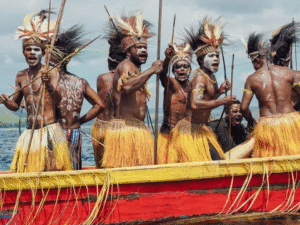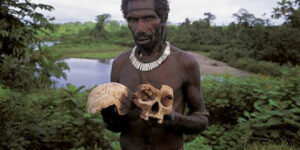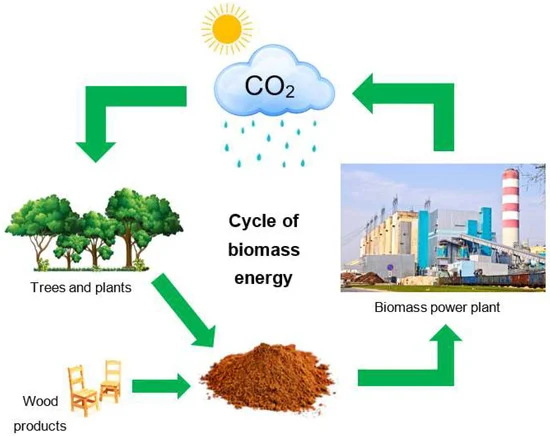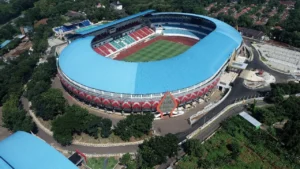Introduction: A New Chapter for Renewable Energy in Papua
As the world grapples with the devastating effects of climate change, regions across the globe are turning to renewable energy as a solution. In eastern Indonesia, Merauke — a regency located in Papua — has quietly made a remarkable achievement: 50% of its electricity now comes from biomass, primarily sourced from wood waste.
This sustainable energy revolution represents more than just clean electricity; it symbolizes a commitment to innovation, local empowerment, and environmental stewardship. In this article, we explore how Merauke’s use of wood-based biomass is transforming its energy sector and creating a model for other rural regions in Indonesia and beyond.
Chapter 1: Understanding Biomass Energy

Biomass is organic material derived from living or recently living organisms. In Merauke, biomass primarily comes from wood and forest residue, including:
- Sawn wood offcuts
- Logging byproducts
- Timber industry waste
- Agricultural residues
Instead of letting this organic matter decompose or be burned inefficiently, the local government and energy sector have established controlled biomass energy plants that convert wood into electricity through combustion or gasification.
This process reduces greenhouse gas emissions while creating usable power for homes, schools, businesses, and government facilities across the regency.
Chapter 2: Why Merauke?
Merauke is uniquely suited for biomass electricity generation due to several geographic and economic factors:
- Abundant Forest Resources
Merauke sits on the edge of Papua’s rich lowland tropical forests, home to vast timber resources. However, instead of engaging in unsustainable logging, the biomass initiative focuses on using waste materials from regulated forestry and agroforestry. - Remote and Isolated Grid
Merauke’s isolation from Indonesia’s central grid makes it difficult to access national electricity sources. This challenge has pushed local authorities to seek localized, off-grid renewable solutions. - Lack of Fossil Fuel Infrastructure
Unlike Java or Sumatra, Papua lacks robust infrastructure for fossil fuel distribution. Transporting diesel or coal is both expensive and polluting, making biomass a cost-effective and eco-friendly alternative.
Chapter 3: The 50% Milestone — How It Was Achieved
According to recent reports by the local energy office and PLN (Indonesia’s state-owned electricity company), biomass accounts for 50% of total electricity generation in Merauke as of 2025.
How was this achieved?
- Public-Private Partnerships
Collaboration between local government, PLN, and private investors led to the construction of small- and medium-scale biomass power plants. - Technology Transfer
Partnerships with international energy technology providers helped bring efficient biomass gasification and combustion systems to Merauke. - Community-Based Collection Systems
Local communities are engaged in collecting wood waste, providing them with additional income while securing raw material for power plants. - Decentralized Microgrids
Rural areas are powered by decentralized microgrids connected to small biomass power plants, making the system resilient and scalable.
Chapter 4: Environmental and Economic Benefits
Transitioning to biomass-based electricity has created a wide array of benefits for Merauke, both environmentally and economically.
Environmental Benefits:
- Reduction in CO₂ Emissions
Biomass energy emits significantly less CO₂ compared to diesel or coal. It is considered carbon-neutral when sourced sustainably, as the carbon released is balanced by the carbon absorbed by growing plants. - Prevention of Illegal Logging
With legal frameworks in place, the biomass system encourages responsible forestry practices and reduces incentives for illegal logging. - Waste Reduction
Wood and agricultural waste are no longer discarded or burned inefficiently, improving air quality and reducing landfill usage.
Economic Benefits:
- Job Creation
New opportunities have emerged in biomass collection, processing, logistics, and plant operations. - Local Ownership
Many facilities are community-managed, leading to a sense of local ownership and increased sustainability. - Cost Savings
Compared to diesel, biomass is significantly more affordable in the long run, especially given the high transport costs of fossil fuels in remote areas.
Chapter 5: The Role of Indigenous Knowledge
Merauke is home to many indigenous Papuan tribes, including the Marind, Kanum, and Malind people. These communities have long-standing knowledge of the land and its resources.
By involving indigenous knowledge systems in biomass initiatives — particularly in forest management and sustainable harvesting techniques — the region ensures that development is respectful, inclusive, and effective.
Traditional forest stewardship models are being integrated into biomass sourcing policies, ensuring that the harvest of wood residue is both culturally sensitive and ecologically sustainable.
Chapter 6: Challenges and Solutions
Challenge 1: Supply Chain Logistics
Remote areas often struggle with transporting biomass from collection points to power plants. To solve this:
- Mobile pelletizers have been introduced to compress waste on-site.
- Solar-powered transportation solutions are being piloted for short-distance hauling.
Challenge 2: Seasonal Variability
Rainy seasons can hamper biomass drying and transportation. To address this:
- Storage silos have been built with climate control systems to ensure consistent fuel supply.
- Drying kilns powered by waste heat from biomass plants are also in use.
Challenge 3: Technological Maintenance
Many rural areas face a lack of skilled technicians. The solution:
- Capacity-building programs in partnership with vocational schools in Merauke.
- On-site technician training by international partners.
Chapter 7: National and Global Implications
Merauke’s success serves as a model for other remote and forested regions, both in Indonesia and globally. In fact:
- The Indonesian Ministry of Energy and Mineral Resources has designated Merauke as a national pilot project for biomass electrification in rural areas.
- International NGOs and climate action groups now recognize Merauke in their case studies on sustainable rural energy transitions.
- Other regencies in Papua — such as Boven Digoel and Mappi — are beginning to develop similar systems.
Chapter 8: Biomass and the Just Energy Transition
Indonesia’s energy roadmap, known as the RUEN (Rencana Umum Energi Nasional), targets 23% renewable energy mix by 2025. Merauke is one of the few regions already exceeding this target thanks to its biomass adoption.
But what makes Merauke’s transition so impactful is that it is aligned with the principle of energy justice — ensuring that marginalized and remote populations are not left behind in the green revolution.
This is particularly significant in a region like Papua, which has historically faced infrastructure neglect and socio-political marginalization.
Chapter 9: Future Outlook — Towards 100% Renewable?
As of 2025, biomass powers 50% of Merauke’s electricity needs. But regional planners and energy experts believe the number can go even higher.
Roadmap to 2030:
- 60% biomass by 2027, with increased use of bamboo and plantation waste
- Integration with solar and wind microgrids to reach 80% by 2029
- Full 100% renewable target by 2030, making Merauke one of the first 100% green regions in Indonesia
Research is also ongoing into second-generation biofuels from palm residues and algae — both abundant in eastern Indonesia.
Chapter 10: Community Voices
“We used to rely on diesel generators. They were loud, expensive, and polluting. Now our kids can study at night with clean energy from our own forests.”
— Maria, Schoolteacher in Okaba
“I work with my neighbors collecting wood waste. We’re paid fairly and know that we are helping our environment.”
— Tomas, Community Biomass Collector
“This project made me believe that Papua is not behind. We are leading the way in green energy.”
— Yosef, Local Youth Activist
Conclusion: Merauke’s Green Energy is a National Inspiration
The success story of Merauke is a testament to what is possible when innovation meets tradition, and when sustainability is guided by community, not just capital.
Through its strategic use of wood-based biomass, Merauke is not only lighting homes but also illuminating a path forward for Indonesia’s green energy transition.
It’s time we learn from Merauke — that a greener, more just, and eco-friendly future is not a far-fetched dream, but a reality already unfolding in the forests of Papua.
Call to Action
Want to support sustainable energy in Papua?
- Share this story on your social platforms
- Support NGOs working in renewable energy and indigenous rights
- Advocate for renewable energy policies in your region
- Choose products that promote sustainability and transparency
Let’s follow Merauke’s example and move towards a cleaner planet — one community at a time.









